Instruction
The Ultimate Putting Program (Part 4): Green Reading
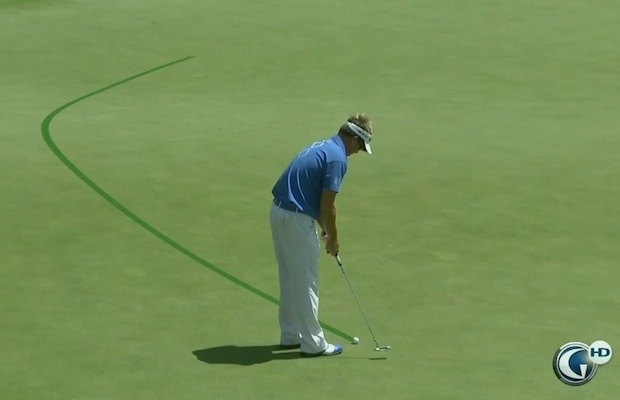
If you know one thing about green reading, it should be this: The golf ball abides by the laws of gravity and when in motion it will roll towards the low point of any slope.
A lot of golfers use mental images such as “picturing the break as how water would run off a green” to help them read their putts. They also follow adages such as “the putt will break away from nearby mountains,” or “the putt will break toward bodies of water.” These teachings are usually helpful and true, and should be taken into consideration. But there are also subtler elements that golf course architects build into greens to offset the natural lay of the land.
A sure way of reading greens can be determined by the speed of the green, the degree of the slope, the position that the ball sits on the slope, the length of the putt and sometimes the grain of the grass. The faster the green, the more break a golfer will need to play, as there is little friction to stop the ball from breaking. Steeper slopes will obviously produce more break.
The position on the slope can be referred to as a clock system where 6 o’clock is straight uphill and 12 o’clock is straight downhill. The closer the ball is to 10 o’clock and 2 o’clock, the more the ball will break. Now I am sure you’re probably wondering why the most break is not at 9 o’clock and 3 o’clock. It is because at 10 o’clock and 2 o’clock, the putt is downhill. That makes it faster, thus creating more break. The longer the putt, the more it will break as well.
Grain only affects the break on certain types of grasses such as Bermuda, and can be identified by the shine of the grass. When the grass seems shiny, it is down grain and will be faster than usual. When the grass is dull, it is into the grain and will be slower than usual.
The diagram above shows four quadrants that are true around any golf hole. Putts from quadrants A and B are downhill, whereas putts from quadrant C and D are uphill. Putts from quadrants A and C break left-to-right, whereas putts from quadrants B and D break right-to-left. The numbers on the diagram represent the clock system to identify a golfer’s position on the slope. The colored lines are the intended paths of the putt whereas the dotted lines represent the target lines or “Aimpoints.”
Let’s consider an example that I gave in one of my previous articles. A golfer in quadrant A who aims his putter left of the Aimpoint will need to compensate by rolling the ball at a slower speed to allow for more break and/or open the putter face at impact. The opposite is true for a right aimer, who will need to roll the ball at a faster speed for the ball to maintain its line and/or close the putter face at impact. This illustrates why aim, speed, and path are vital components to being a successful green reader. By eliminating variables and the need for compensations, a golfer will ultimately become more consistent.
After understanding the basic geometry to putting, green reading comes down to two methods: spot-putting and arc-putting.
Spot-Putting
Golfers who are spot-putters identify an Aimpoint at which they will putt toward on a straight line, allowing gravity to send the ball towards the hole. I suggest choosing an Aimpoint that is equal distance from the hole. It is important to note that the Aimpoint is not inline with the apex of the arc, but rather on a line tangent to the starting point. This ensures enough break for the ball to enter the hole on the “high-side,” i.e. “the pro side.” Far too many golfers don’t play enough break when reading greens.
After selecting an Aimpoint, golfers should become fully focused on its location and pay no attention to the hole. I believe this is a critical component in being a good spot putter. I for one have had great success with this method.
Spot-Putting Drill
In Part 3 of my series, I offered a drill to help golfers identify the target line by the use of a chalk line or a string suspended by knitting needles. This same drill can also be used on breaking putts. I suggest starting with the string method, as it is much easier to adjust to find the correct Aimpoint for a given putt. For a breaking putt, you will want to position the string on a line tangent to the intended arc. You will putt so that you roll the ball straight down the line, allowing gravity to roll the ball towards the hole.
Note: If interested, you may want to attend an Aimpoint class to learn more about this method of reading greens.
Arc-Putting
Golfers who are arc-putters identify with the intended arc of the putt and aim relative to that arc, but still keep a mental image of the hole. This may be viewed as a more “feel” based method of green reading, but can be equally as effective. It is important to start the ball high enough to allow for maximum break. I find visualizing the speed at which the ball will roll to be a good way to utilize this method.
Arc-Putting Drill
A great practice drill for arc-putters is to set up a pathway of tees from the ball to the hole on the intended arc (this may take some time, as you will need to adjust the tees to find the correct arc). You will then putt balls so that they roll through the pathway and into the hole.
This drill makes it easy to identify what variable within The Putting Triad is the root cause for a putt to ricochet off one of the tees. For that reason, I really like this drill. If you’re like me and find that your speed control is prohibiting you from consistently rolling the ball through the pathway, you may want to reread Part 2 of my series on how the weight of your putter affects speed control and make the necessary adjustments to your putter.
Depending on your natural way of visualizing the intended line of putt, you should benefit from selecting one of these methods of reading greens. Stay tuned for my next article on the importance of developing a pre-shot routine.
To Continue With The Ultimate Putting Program:
- LIKE24
- LEGIT2
- WOW1
- LOL0
- IDHT0
- FLOP0
- OB0
- SHANK1
Instruction
The Wedge Guy: The easiest-to-learn golf basic

My golf learning began with this simple fact – if you don’t have a fundamentally sound hold on the golf club, it is practically impossible for your body to execute a fundamentally sound golf swing. I’m still a big believer that the golf swing is much easier to execute if you begin with the proper hold on the club.
As you might imagine, I come into contact with hundreds of golfers of all skill levels. And it is very rare to see a good player with a bad hold on the golf club. There are some exceptions, for sure, but they are very few and very far between, and they typically have beat so many balls with their poor grip that they’ve found a way to work around it.
The reality of biophysics is that the body moves only in certain ways – and the particulars of the way you hold the golf club can totally prevent a sound swing motion that allows the club to release properly through the impact zone. The wonderful thing is that anyone can learn how to put a fundamentally sound hold on the golf club, and you can practice it anywhere your hands are not otherwise engaged, like watching TV or just sitting and relaxing.
Whether you prefer an overlap, interlock or full-finger (not baseball!) grip on the club, the same fundamentals apply. Here are the major grip faults I see most often, in the order of the frequency:
Mis-aligned hands
By this I mean that the palms of the two hands are not parallel to each other. Too many golfers have a weak left hand and strong right, or vice versa. The easiest way to learn how to hold the club with your palms aligned properly is to grip a plain wooden ruler or yardstick. It forces the hands to align properly and shows you how that feels. If you grip and re-grip a yardstick several times, then grip a club, you’ll see that the learning curve is almost immediate.
The position of the grip in the upper/left hand
I also observe many golfers who have the butt of the grip too far into the heel pad of the upper hand (the left hand for right-handed players). It’s amazing how much easier it is to release the club through the ball if even 1/4-1/2″ of the butt is beyond the left heel pad. Try this yourself to see what I mean. Swing the club freely with just your left hand and notice the difference in its release from when you hold it at the end of the grip, versus gripping down even a half inch.
To help you really understand how this works, go to the range and hit shots with your five-iron gripped down a full inch to make the club the same length as your seven-iron. You will probably see an amazing shot shape difference, and likely not see as much distance loss as you would expect.
Too much lower (right) hand on the club
It seems like almost all golfers of 8-10 handicap or higher have the club too far into the palm of the lower hand, because that feels “good” if you are trying to control the path of the clubhead to the ball. But the golf swing is not an effort to hit at the ball – it is a swing of the club. The proper hold on the club has the grip underneath the pad at the base of the fingers. This will likely feel “weak” to you — like you cannot control the club like that. EXACTLY. You should not be trying to control the club with your lower/master hand.
Gripping too tightly
Nearly all golfers hold the club too tightly, which tenses up the forearms and prevents a proper release of the club through impact. In order for the club to move back and through properly, you must feel that the club is controlled by the last three fingers of the upper hand, and the middle two fingers of the lower hand. If you engage your thumbs and forefingers in “holding” the club, the result will almost always be a grip that is too tight. Try this for yourself. Hold the club in your upper hand only, and squeeze firmly with just the last three fingers, with the forefinger and thumb off the club entirely. You have good control, but your forearms are not tense. Then begin to squeeze down with your thumb and forefinger and observe the tensing of the entire forearm. This is the way we are made, so the key to preventing tenseness in the arms is to hold the club very lightly with the “pinchers” — the thumbs and forefingers.
So, those are what I believe are the four fundamentals of a good grip. Anyone can learn them in their home or office very quickly. There is no easier way to improve your ball striking consistency and add distance than giving more attention to the way you hold the golf club.
More from the Wedge Guy
- The Wedge Guy: Golf mastery begins with your wedge game
- The Wedge Guy: Why golf is 20 times harder than brain surgery
- The Wedge Guy: Musings on the golf ball rollback
- LIKE86
- LEGIT13
- WOW6
- LOL1
- IDHT0
- FLOP4
- OB1
- SHANK8
Instruction
Clement: Stop ripping off your swing with this drill!

Not the dreaded headcover under the armpit drill! As if your body is defective and can’t function by itself! Have you seen how incredible the human machine is with all the incredible feats of agility all kinds of athletes are accomplishing? You think your body is so defective (the good Lord is laughing his head off at you) that it needs a headcover tucked under the armpit so you can swing like T-Rex?
- LIKE0
- LEGIT2
- WOW2
- LOL0
- IDHT0
- FLOP0
- OB0
- SHANK2
Instruction
How a towel can fix your golf swing

This is a classic drill that has been used for decades. However, the world of marketed training aids has grown so much during that time that this simple practice has been virtually forgotten. Because why teach people how to play golf using everyday items when you can create and sell a product that reinforces the same thing? Nevertheless, I am here to give you helpful advice without running to the nearest Edwin Watts or adding something to your Amazon cart.
For the “scoring clubs,” having a solid connection between the arms and body during the swing, especially through impact, is paramount to creating long-lasting consistency. And keeping that connection throughout the swing helps rotate the shoulders more to generate more power to help you hit it farther. So, how does this drill work, and what will your game benefit from it? Well, let’s get into it.
Setup
You can use this for basic chip shots up to complete swings. I use this with every club in my bag, up to a 9 or 8-iron. It’s natural to create incrementally more separation between the arms and body as you progress up the set. So doing this with a high iron or a wood is not recommended.
While you set up to hit a ball, simply tuck the towel underneath both armpits. The length of the towel will determine how tight it will be across your chest but don’t make it so loose that it gets in the way of your vision. After both sides are tucked, make some focused swings, keeping both arms firmly connected to the body during the backswing and follow through. (Note: It’s normal to lose connection on your lead arm during your finishing pose.) When you’re ready, put a ball in the way of those swings and get to work.

Get a Better Shoulder Turn
Many of us struggle to have proper shoulder rotation in our golf swing, especially during long layoffs. Making a swing that is all arms and no shoulders is a surefire way to have less control with wedges and less distance with full swings. Notice how I can get in a similar-looking position in both 60° wedge photos. However, one is weak and uncontrollable, while the other is strong and connected. One allows me to use my larger muscles to create my swing, and one doesn’t. The follow-through is another critical point where having a good connection, as well as solid shoulder rotation, is a must. This drill is great for those who tend to have a “chicken wing” form in their lead arm, which happens when it becomes separated from the body through impact.
In full swings, getting your shoulders to rotate in your golf swing is a great way to reinforce proper weight distribution. If your swing is all arms, it’s much harder to get your weight to naturally shift to the inside part of your trail foot in the backswing. Sure, you could make the mistake of “sliding” to get weight on your back foot, but that doesn’t fix the issue. You must turn into your trial leg to generate power. Additionally, look at the difference in separation between my hands and my head in the 8-iron examples. The green picture has more separation and has my hands lower. This will help me lessen my angle of attack and make it easier to hit the inside part of the golf ball, rather than the over-the-top move that the other picture produces.


Stay Better Connected in the Backswing
When you don’t keep everything in your upper body working as one, getting to a good spot at the top of your swing is very hard to do. It would take impeccable timing along with great hand-eye coordination to hit quality shots with any sort of regularity if the arms are working separately from the body.
Notice in the red pictures of both my 60-degree wedge and 8-iron how high my hands are and the fact you can clearly see my shoulder through the gap in my arms. That has happened because the right arm, just above my elbow, has become totally disconnected from my body. That separation causes me to lift my hands as well as lose some of the extension in my left arm. This has been corrected in the green pictures by using this drill to reinforce that connection. It will also make you focus on keeping the lead arm close to your body as well. Because the moment either one loses that relationship, the towel falls.


Conclusion
I have been diligent this year in finding a few drills that target some of the issues that plague my golf game; either by simply forgetting fundamental things or by coming to terms with the faults that have bitten me my whole career. I have found that having a few drills to fall back on to reinforce certain feelings helps me find my game a little easier, and the “towel drill” is most definitely one of them.
- LIKE12
- LEGIT2
- WOW2
- LOL0
- IDHT0
- FLOP2
- OB0
- SHANK8
-

 19th Hole2 weeks ago
19th Hole2 weeks agoDave Portnoy places monstrous outright bet for the 2024 Masters
-

 19th Hole2 weeks ago
19th Hole2 weeks agoTiger Woods arrives at 2024 Masters equipped with a putter that may surprise you
-

 19th Hole22 hours ago
19th Hole22 hours ago‘Absolutely crazy’ – Major champ lays into Patrick Cantlay over his decision on final hole of RBC Heritage
-

 19th Hole3 weeks ago
19th Hole3 weeks agoReport: Tiger Woods has ‘eliminated sex’ in preparation for the 2024 Masters
-

 19th Hole1 week ago
19th Hole1 week agoTwo star names reportedly blanked Jon Rahm all week at the Masters
-

 19th Hole1 week ago
19th Hole1 week agoReport: LIV Golf identifies latest star name they hope to sign to breakaway tour
-

 19th Hole1 week ago
19th Hole1 week agoNeal Shipley presser ends in awkward fashion after reporter claims Tiger handed him note on 8th fairway
-

 19th Hole6 days ago
19th Hole6 days agoBrandel Chamblee has ‘no doubt’ who started the McIlroy/LIV rumor and why

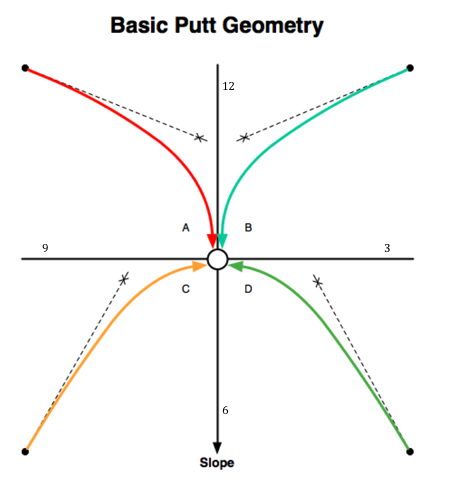
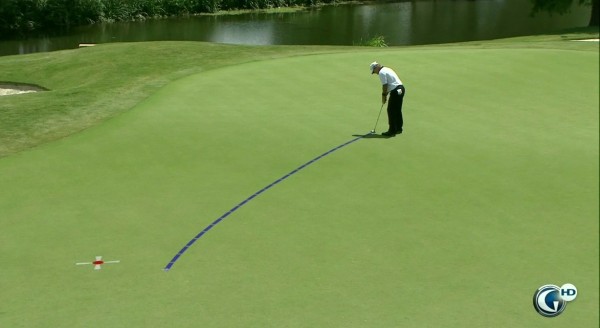
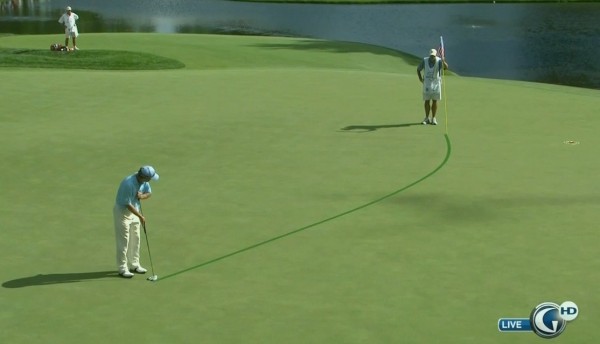


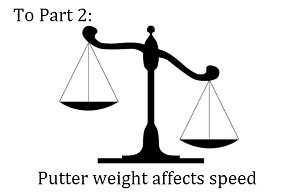

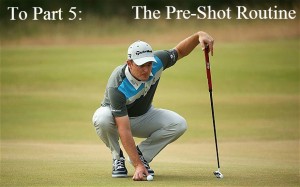






















Keith
Jun 20, 2014 at 4:36 pm
Does putting truly need to be this technical?
CJ Decker
Jul 20, 2015 at 3:05 am
NO !! http://www.readinggreens.net THE FALL LINE – AIMPOINT – allows for a TWO INCH margin of error in feeling the fall line. SECRETS OF THE FALL LINE – uses basic math to locate and prove the fall line. SPEED – AIMPOINT – speed is specific with AimPoint because of all the other calculations developed for slope, putting trajectory and high pointing the apex. Use the correct speed and AimPoint works. SECRETS OF THE FALL LINE – allows the individual player to use their own speed, thus, allowing for putting trajectories such as charging your putt or lagging your putt … either works. LOOK, THERE’S A LOT MORE, but to Keith, there are alternatives and Secrets of The Fall Line is one of them. As for the experts at GolfWRX, it’s my understanding that this site was developed to help all golfers, not just champion one strategy over another. There’s a reason Mark Sweeney followed me on Twitter and not the other way around.
Nick O'Hern
Mar 25, 2014 at 7:25 pm
I like the clock diagram, explains it well, cheers Henry
nik d
Jan 6, 2014 at 10:07 pm
I disregard any putting tips, especially for my home course. even the big dogs say that putting there is a gamble.. I was practicing putting one day, and the head pro asked what I was doing, I told him I was practicing, his response “practicing! on these greens!, you would have better odds rolling those putts on a vegas crapps table”
Henry Stetina
Dec 30, 2013 at 7:24 pm
6 O’clock is the low point of the “clock.” 12 would be the high point.
R
Dec 30, 2013 at 5:34 pm
I think the diagram for the clock you’ve shown is wrong. For example, on the top left quadrant in the diagram (red line), to make that uphill putt (as you said, 6 is straight uphill), you’d have to aim above the hole as the slope will push it towards the right. Same way for the top left (turquoise line) you’d aim above the hole (given that 6 is straight uphill) in order to make it in.
A simple fix would be to call 12 straight uphill and 6 straight downhill 🙂
Henry Stetina
Dec 30, 2013 at 6:25 pm
I think you are confused. Red line is downhill left-to-right. Turquoise (top right) is downhill right-to-left.
R
Dec 30, 2013 at 7:15 pm
“The position on the slope can be referred to as a clock system where 6 o’clock is straight uphill and 12 o’clock is straight downhill”
Your image shows that the red line and turquoise line start towards 12 and end towards 6. that makes it an uphill putt.
Henry Stetina
Dec 30, 2013 at 7:25 pm
6 O’clock is the low point of the “clock.” 12 would be the high point.
R
Dec 30, 2013 at 7:29 pm
Never mind I see what you’re saying. Somewhat confusing because you say the position on the slope (slope being the subject in the sentence) is straight uphill at 6 and straight downhill at 12.
You should clarify such that it says something along the lines that THE PUTT is straight uphill at 6 and THE PUTT is straight downhill at 12. Makes it clearer that you’re referring the path the rolling putt takes.
Also, the lines referring to slope are somewhat misleading because you have the arrow at the bottom of the image (downward) pointed at slope. It would be clearer if you wrote instead of slope that 6 was the low point of the green and 12 was the high point of the green.
I understand your arrow shows that the slope is in that direction, but given this sentence…”The position on the slope can be referred to as a clock system where 6 o’clock is straight uphill and 12 o’clock is straight downhill”, it’s misleading in the sense that it describes the slope at 6 being uphill and the slope at 12 being downhill whereas you’re describing the putt.
Just a quick change of words and it’s much easier to understand.